After years of striving desperately to find careers in their professional fields, more young people are turning to agriculture to provide for their families in light of the difficult economic conditions in Gaza.
In particular, two groups of young women, one in Khuza’a and another near Deir Al-Balah, are returning to the land their ancestors took great pain to persevere in an effort to share the dangers and difficulties of building a new life and career farming the land.
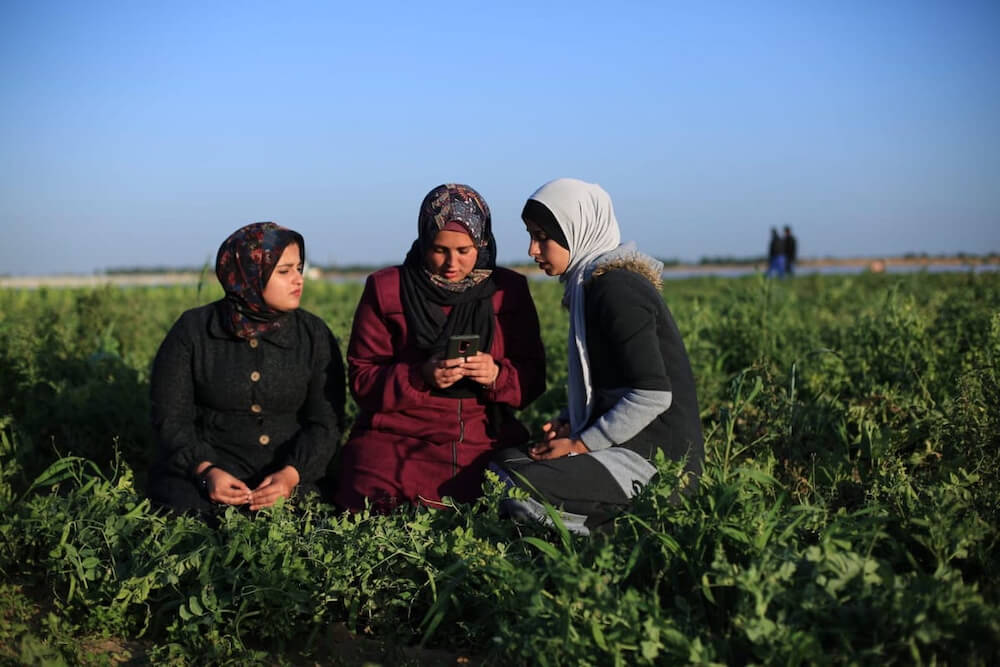
The Green Girls
Close to the Apartheid fence erected by Israel on the Gaza frontier, Aseel Al-Najjar, 28, rents land in Khuza’a, east of Khan Younis along with Nadine Abu Rouk and Ghaida Qudeih where they started their project “The Green Girls”.
The young graduates failed to find careers in the fields they majored in, business and education, and are now turning to agriculture. “The difficult financial situation I survived with my family has prompted me to seek work in every field,” says Al-Najjar. “Agriculture was not my first choice.”

And yet, Al-Najjar’s group has succeeded through their tireless work throughout the year in turning an area of eight acres into a beautiful green piece of land. “Once we harvest a crop, we start planting the land with a new seasonal one,” Aseel explains.
East of Deir Al-Balah, another group of young women headed by Amani Bashir, 30, is utilizing their family’s land to turn it into a source of income. “It is not the opportunity that creates us; we are the ones who create opportunities,” Bashir tells me.
Heading to the land in the early hours of the morning, Bashir is accompanied by her friend Faten and cousin Nadine, who share in watering crops, fertilizing the land, and picking fruit. They cooperate with each other like a beehive while swapping stories about their lives.
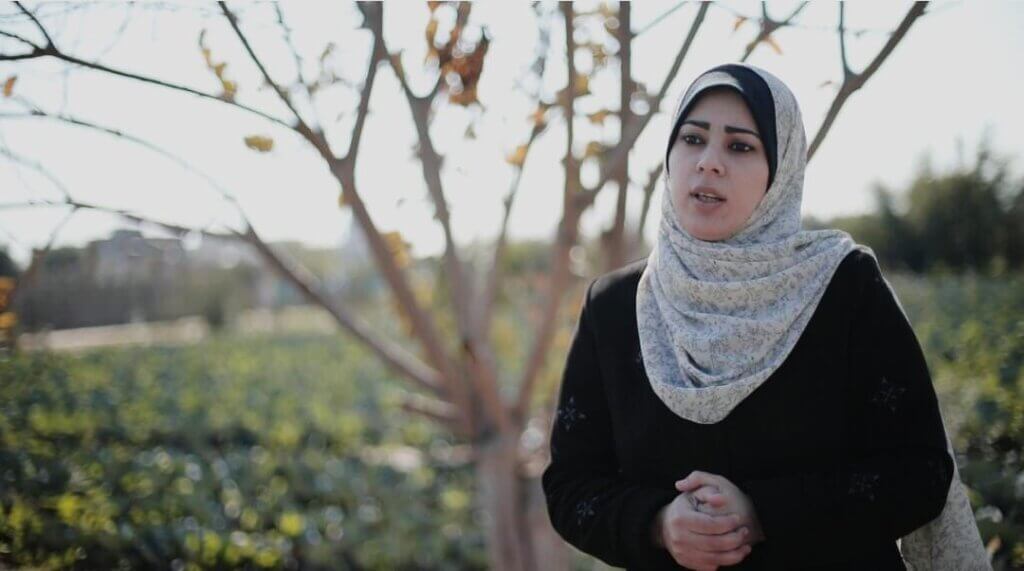
Bashir is a mother of two children, and she graduated with a degree in Web Design Development, but was not able to find enough work as a freelancer to provide for her family. “We suffer a lack of electricity and internet, which constitutes a great obstacle for every freelancer,” she says.
Nadine Bashir, 28, also a mother of two children, explained that it is difficult to juggle working on land and motherhood. She said, “It was not easy as I used to accompany my son to school, come to the land, and then come back to prepare lunch, but now I’ve adapted.”
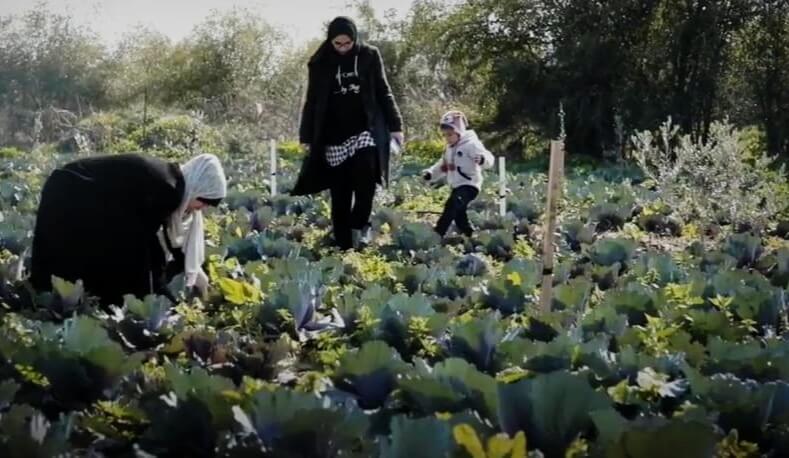
In winter, the situation gets even worse. The streets in Deir Al-Balah and Khuza’a are badly damaged which makes travel difficult. Al-Najjar complains, “This winter was extremely harsh and bitter, damaging a large quantity of crops due to frost.” The muddy streets of both two areas are flooded with rainwater, making access to the land difficult.
The impact of the siege
Despite these women’s best efforts, their attempts to build the agriculture section in Gaza is constantly in danger due to Israeli aggression.
The land Al-Najjar works is only 500 meters from the Apartheid fence and constantly exposed to the threat of bulldozers and the spraying of pesticides and toxic gases by the Israeli occupation forces stationed at the fence.
The presence of the Israeli forces on the border frightens Al-Najjar and the women working with her. She says, “Many times we refrained from going to the land for many days for fear of bulldozers, which adversely affect the crops that need continuous attention.”
The repeated Israeli bombing of Gaza has also affected the fertility of vast areas of agricultural lands. Some of the lands are no longer suitable for cultivation and some have limited cultivation success. “We made a great effort to make agriculture work on the land, and we are still struggling to make it better,” says Nadine Bashir.
Nadine and Amani Bashir planted cabbage, and have found their sizes vary, some very small and some large due to the lack of fertility of the land.
Adham al-Basiouni, a spokesman for the Ministry of Agriculture in Gaza, told Mondoweiss that the recent Israeli aggression on Gaza in May 2021 caused about 55 million dollars in losses to the agricultural sector.
Al-Bassiouni added that nearly 6,000 farmers were affected by the indiscriminate Israeli bombing, which prevented farmers from reaching the lands, thus exposing hundreds of cultivated acres to damage.
One of the most important challenges facing farmers is the lack of equipment for farming. Both Bashir and Al-Najjar complained about the unavailability of some equipment in the Gaza Strip due to the Israeli closure of the crossings.
Al-Najjar said that the presence of the Israeli occupation constitutes a huge obstacle to agriculture, and Bashir is constantly afraid that a new Israeli bombing campaign will affect the land and the crops.
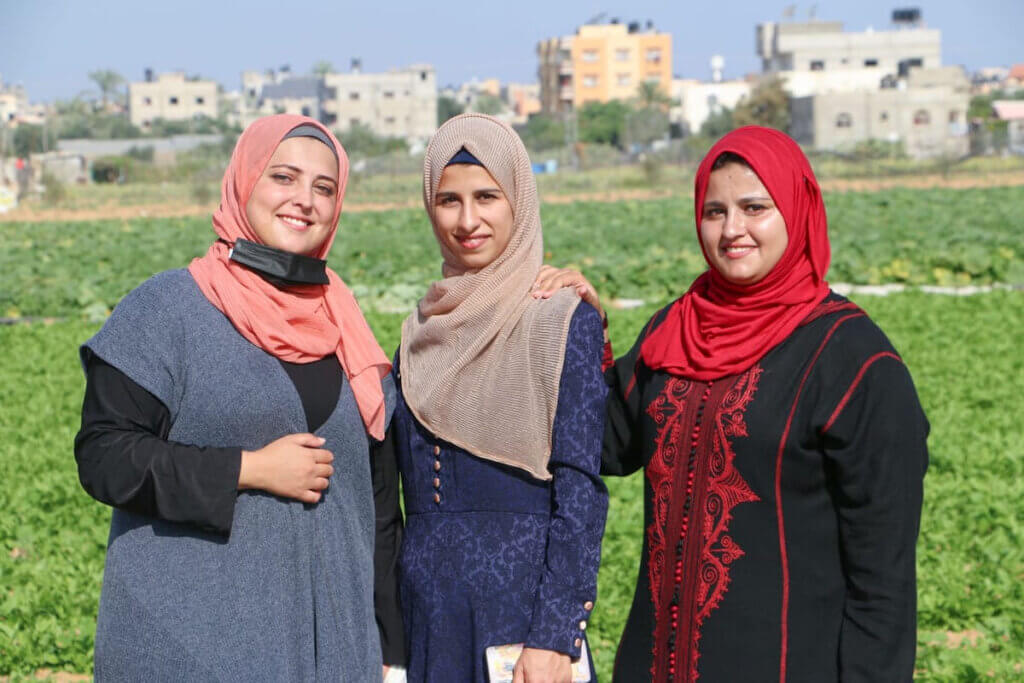
Support from the community
Although life in rural areas is extremely difficult, people are always trying to support each other. The Green Girls project didn’t cost Al-Najjar much to start as other farmers in Khuza’a were her initial source of support and funding.
Al-Najjar leased the land from an owner who refused to take any payments until the first crop would be harvested. She explains, “One of the reasons we work in agriculture is because agriculture is the primary industry for most people in the area who helped and supported us.”
Nadine Bashir explains that using her father’s, husband’s, and relatives’ experience helped her in her project as she had learning to do. “We would all come with our families, make breakfast together, and sit happily chatting about the land and crops.”
In the year since Amani Bashir first created a Facebook group for women in her area to discuss their issues, she has become an inspirational figure to many women who have voluntarily rushed to help her on the land.
She tells Mondoweiss that when she posts about her project on the group, she receives hundreds of comments from women who want to learn and also want to start working on their families’ abandoned lands. Bashir says proudly, “They came as volunteers to help us so they gain experience and start their own businesses.”
Working on the land is a heroic tale. Palestinian woman, both rural and urban, are able to challenge daunting circumstances with only their determination and steadfastness.
With a trembling voice and eyes brimming with tears, Al-Najjar finishes talking with me by stressing that her close relationship to the land is completely different now than it was before working in agriculture. She says, “This land is not merely soil; it is our strength, hope, and soul.”
Bashaer Muammar
Bashaer Muammar is a Palestinian activist and translator from Gaza, and a graduate of English Language and Art from Islamic University of Gaza.
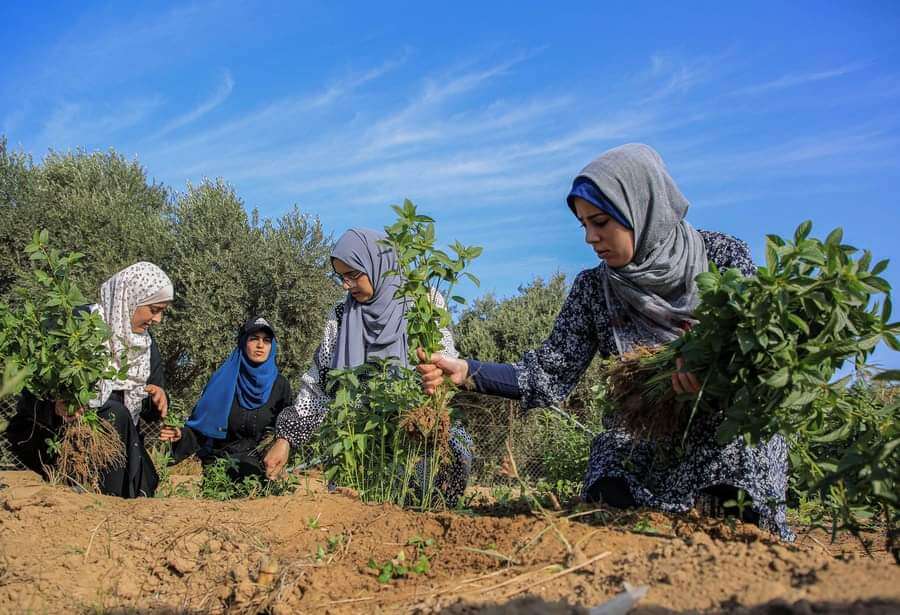
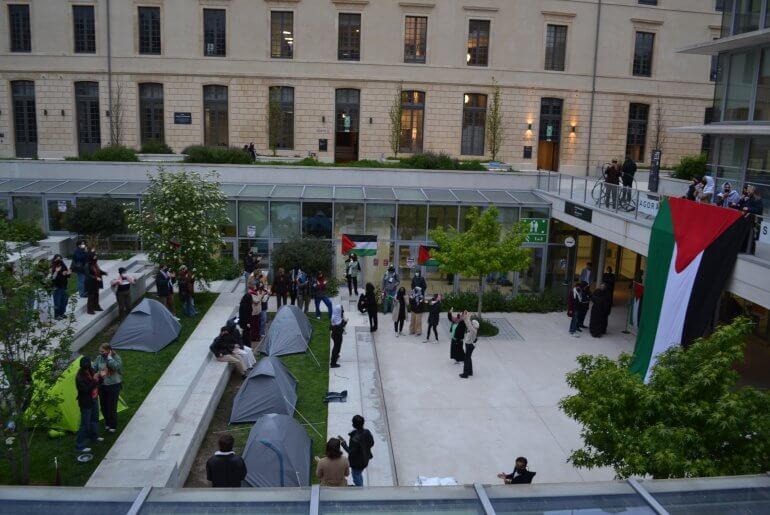
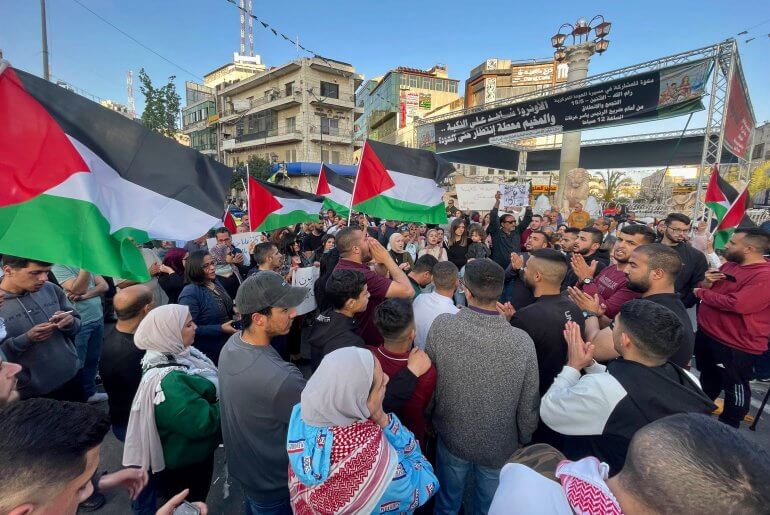
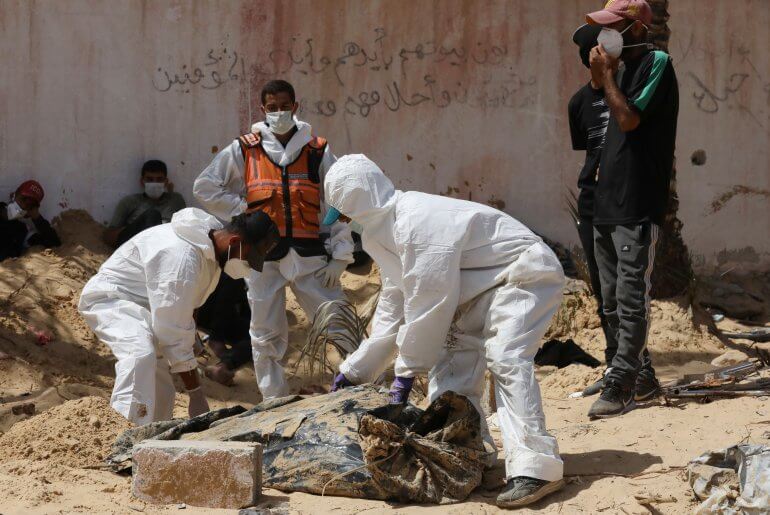
1 of 3
Gaza Under the World (arabamerica.com)
Gaza under the World, Feb. 16/22
By Ahmed Abu Sultan/Arab America Contributing Writer
Excerpt:
“Gaza, also referred to as Gaza City, is a Palestinian city in the Gaza Strip. Inhabited since at least the 15th century BC, Gaza has been dominated by several different peoples and empires throughout its history. In Semitic languages, the meaning of the city name is fierce or strong. Gaza’s history of habitation dates back 5,000 years, making it one of the oldest cities in the world. Located on the Mediterranean coastal route between North Africa and the Levant, for most of its history, it served as a key port of southern Palestine and an important stopover on the spice trade route traversing the Red Sea. However, even with the modern crisis occurring there, the world turned a blind eye to the bleeding ancient city.
“Settlement in the region of Gaza dates back to the ancient Egyptian fortress built in the Canaanite territory at Tell es-Sakan, to the south of present-day Gaza. The site went into decline throughout the Early Bronze Age II as its trade with Egypt sharply decreased. Another urban center known as Tell el-Ajjul began to grow along the Wadi Ghazza riverbed. During the Middle Bronze Age, a revived Tell es-Sakan became the southernmost locality in Palestine, serving as a fort. In 1650 BCE, when the Canaanite Hyksos occupied Egypt, a second city developed on the ruins of the first Tell as-Sakan. However, it was abandoned by the 14th century BCE, at the end of the Bronze Age.”During the reign of Tuthmosis III, the city became a stop on the Syrian-Egyptian caravan route. Gaza later served as Egypt’s administrative capital in Canaan. Gaza remained under Egyptian control for 350 years until it was conquered by the Philistines in the 12th century BC. Afterward, Gaza became part of the Philistine. According to the Hebrew Bible’s Book of Judges, Gaza was the place where Samson was imprisoned by the Philistines and met his death. A story worth telling that defined the population of that city even during the modern era. After being ruled by the Israelites, Assyrians, and then the Egyptians, Gaza achieved relative independence and prosperity under the Persian Empire. Greek culture consequently took root and Gaza earned a reputation as a flourishing center of Hellenistic learning and philosophy after the conquests of Alexander the Great.(cont’d)
.
2 of 3
“Throughout the Roman period, Gaza was a prosperous city and received grants and attention from several emperors. A senate governed Gaza, and a diverse variety of Greeks, Romans, Phoenicians, Jews, Egyptians, Persians, and Bedouin populated the city. Gaza’s mint issued coins adorned with the symbols of gods and emperors.
“Following the division of the Roman Empire in the 3rd century, Gaza remained under the control of the Eastern Roman Empire that in turn became the Byzantine Empire. The city prospered and was an important center for southern Palestine. However, it was not long before the Islamic conquest. In 634, Gaza was besieged by the Muslim Rashidun army under general ‘Amr ibn al-‘As, following the Battle of Ajnadayn between the Byzantine Empire and the Rashidun Caliphate in central Palestine. It was captured by the Muslim forces three years later. Believed to be the site where Muhammad’s great grandfather Hashim ibn Abd Manaf was buried, Gaza was not destroyed and its inhabitants were not attacked by ‘Amr’s army despite the city’s stiff and lengthy resistance. An aspect that will be repeated countless times across history. “The arrival of the Muslim Arabs brought significant changes to Gaza. Initially, some of its churches were transformed into mosques, including the present Great Mosque of Gaza. A large segment of the population swiftly adopted Islam, and Arabic became the official language. In 767, Muhammad ibn Idris ash-Shafi’i was born in Gaza and lived his early childhood there; he founded the Shafi’i religious code, one of the four major Sunni Muslim schools of fiqh (religious law). Security, which was well-maintained during early Muslim rule, was the key to Gaza’s prosperity. Although alcohol was banned in Islam, the Jewish and Christian communities were allowed to maintain wine production, and grapes, a major crop of the city, were exported mainly to Egypt.(cont’d)
3 of 3
“The Crusaders conquered Gaza in 1100 and King Baldwin III built a castle in the city for the Knights Templar in 1149. He also had the Great Mosque converted back into a church, the Cathedral of Saint John. However, it did not last long before it was put under Mamluk rule. Afterward, the city was reduced to a village for the longest period under Ottoman rule. This signified the negligence the Eastern Ottomans had towards the religion they adopted to further their interest in the region.
“While leading the Allied Forces during World War I, the British won control of the city during the Third Battle of Gaza in 1917. After the war, Gaza was included in Mandatory Palestine. In the 1930s and 1940s, Gaza underwent a major expansion. New neighborhoods were built along the coast and the southern and eastern plains. International organizations and missionary groups funded most of this construction. Much of that work was reversed not long after due to the 1948 crisis.
“In the 1947 United Nations Partition Plan, Gaza was assigned to be part of an Arab state in Palestine but was occupied by Egypt following the 1948 Israeli-Arab War. Gaza’s growing population was augmented by an influx of refugees fleeing or expelled from nearby cities, towns, and villages that were captured by Israel. In 1957, Egyptian president Gamal Abdel Nasser made a number of reforms in Gaza, which included expanding educational opportunities and the civil services, providing housing, and establishing local security forces.
“Gaza was occupied by Israel during the 1967 Six-Day War following the defeat of the Egyptian Army. Frequent conflicts have erupted between Palestinians and the Israeli authorities in the city since the 1970s. The tensions led to the First Intifada in 1987. Gaza was a center of confrontation during this uprising, and economic conditions in the city worsened. Since that point in time, Gaza fell into a dark cloud where there is no future in sight. Whenever the people of the city take one step forward, something happens that takes them 500 steps back. Nowadays, the city is under strenuous siege, further choking the unrelenting population. We can only hope that maybe tomorrow will be better, and this cloud will be lifted.”